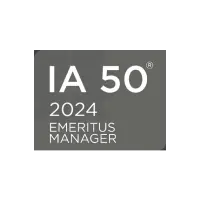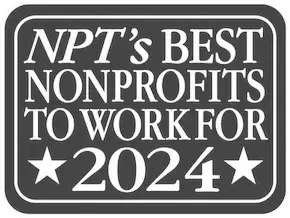Focusing on the Root Causes of Inequity: What the Pandemic and Racial Reckoning Have Meant for Community Development Financial Institutions
The last 18 months, lived in the context of the COVID-19 pandemic, have opened eyes across our country to the inherent inequities that communities of color and communities living with low incomes experience in all aspects of life. Community Development Financial Institutions (CDFIs) have a particular mandate to address these inequities and implement practices that help communities thrive. What has the racial reckoning of the past several months meant for CDFIs?
Next Street Founder and Chairman Tim Ferguson interviewed CDC Small Business Finance and Capital Impact Partners President and CEO Ellis Carr and leaders of other CDFIs to ask what it has meant for their organizations and work. For us, that includes forming a new enterprise with CDC Small Business Finance to reinvent how capital flows into communities to drive community-led solutions that support economic mobility and wealth creation.
As part of that, we are working on three place-based pilots in the Los Angeles, Detroit, and Washington Metropolitan (DMV) areas. In each community, cross-organizational teams are actively engaging with local community members to understand the problems that are unique to each region, while sharing tools, programs, and services that are strategically customized to address high-priority issues.
You can watch Ellis’ interview here or read the transcript below to learn more.
Tim: Hello, everybody. I’m delighted that Ellis Carr, the President and CEO of Capital Impact Partners, and the President and CEO of CDC Small Business Finance, is joining us today to revisit the interview that we did with him in 2018. Welcome, Ellis. I’d like to start with a general question about the last 16 to 18 months. A lot has happened: the global pandemic; the murder of George Floyd and not just George Floyd, but a bunch of other killings as well; a reckoning in in America that systemic racism is a major challenge for our society, finally; evidence supporting the urgency to resolve the climate crisis; and a lot more. If you reflect on your own experience over the last 18 months, what does it meant for the community development industry as a whole? And for your organizations in particular?
Ellis: It’s a great question, Tim. And I think that, to your point, a lot has happened over the last 18 months, and it’s affected us all, personally and professionally. I think what it’s meant for the community development finance space, are a few things.
First, I think as the country has better understood, and that I think, as you mentioned, there’s been a racial reckoning in this country and a general awareness of the historical and institutionalized racism that has existed for a long time, it’s really kind of pushed the work that CDFIs and other community development organizations have been hard at work at for some time to the forefront. When the pandemic happened, and the racial reckoning came to a kind of a climax about a year ago, CDFIs had been hard at work on their journey for racial equity. And really what that has meant is the same level of awareness, or increasing level of awareness, around how institutionalized structural racism has impacted communities of color. And then a retooling or a pivoting of business strategies to align themselves to really ensure that capital is moving in ways to unlock the barriers that have existed for so long. And that’s actually precluded communities from getting the resources that they need.
For us that has been pivoting from a sector-based, national strategy, to really focusing on a place-based strategy, where we choose to go deep and bring all of our resources to bear to a place. It’s also meant that we have really thought about entering the community in a very different way. It’s really affected what we did and how we did it. Again, we have really pivoted from a national sector-based strategy to a place-based orientation, and entering the community by first listening, and then developing products and services to respond to what we believe the community’s needs are. That was a fundamental shift for us and a lot of different ways.
And then the third thing I’d say that was really a change for us was after starting our racial equity journey, learning more as an organization, and developing products and services that align with the community, we’ve also really focused our efforts on the root causes – not the symptoms – but the root causes of the issues that we believe preclude capital flowing into communities. We’ve fundamentally changed the way that they’ve gone and done work. And I’m happy to say that we kind of made that realization prior to the pandemic and prior to last year, but it’s actually put, again, the work of CDFIs like Capital Impact and others at the forefront of this work.
Tim: I’m particularly interested in the last point – that it’s changed the products and services that you offer. Can you say a little bit more about that? And how you’re addressing the root causes of the systemic issues that these communities are dealing with?
Ellis: It’s changed the way that we’ve gone about developing products and services, because we’ve been much more intentional about them. Rather than just thinking about how we affect poverty writ large, and how we think about poverty alleviation, we’ve said, “what are the main drivers of poverty?” And particularly for the communities we’re serving, which oftentimes are majority minority. As we’ve really taken a step back to think through that and evaluate the different geographies that we’re in, we’re also deeply engaging the community.
We have utilized that knowledge to begin to develop products and services that look different: that value the assets and the community differently. I think we can all understand why the credit system works the way it does – it works quite well for many people – but it doesn’t work well for everyone. And for the folks who are excluded from mainstream finance and financial services, we had to think about ways to really encourage participation and develop products and services to get more folks to participate.
So, we’ve done a few things. One, we’ve thought about how we develop capacity building efforts that create networks that create connections and knowledge so that capital can be consumed in the right ways. And then we’ve developed products that have taken a different perspective on underwriting and gone away from the traditional underwriting that many organizations use that require “skin in the game” of 10 to 20%, and really think: given the historical inequities that have existed in the market, what are other proxies for “skin in the game?”
So those are just a few examples of how we’ve gone about it differently. A specific example is the Equitable Development Initiative we did that’s focused on helping to grow the pipeline of minority developers. We’ve developed not only the technical assistance and training, which is a 16-week program, but we’ve also developed capital loan funds, both in Detroit and DC to help provide specific support to developers, in this case.
Tim: That’s really interesting. I saw the announcement around the DC fund, so congratulations on that as well.
I think that one of the things we’ve seen in terms of this “reckoning” is that corporates have been quick, perhaps, to step up with commitments. I think that the running tally is in the vicinity of $68 billion committed to systemically held back communities or businesses. And yet my understanding is that so far, the amount that’s actually been deployed is a fraction of that. Are you concerned that this is something that can’t be sustained? And what is your view in general, about what you think the major corporates, like some of the largest fortune 100 companies, but also the financial institutions could be doing to help transform the communities that you work in?
Ellis: That’s a great question, Tim. I think I’ll start by saying I am concerned that this is a moment, a fleeting moment at that. Because quite frankly, it could be perceived as politically incorrect to stay silent. And, as you mentioned, there have been a tremendous amount of commitments made, and my concern is that those commitments have been made in some cases in good spirit, but it’s doing more of the same that has always been done, which is actually not going to address the problem.
It’s a band aid, but if we really want to fix the deep intractable problems that we have, we really have to look at the root causes. And so, my hope would be that corporates would really think differently about how they are making their commitments, where they’re making their commitments, and actually be courageous around thinking differently about how to shift the paradigm to really help support more people coming into the financial mainstream.
And quite frankly, when you think about it, it’s just a good business practice, the literal face of the nation is changing; this country will be majority minority by 2050. These are future customers, future partners, and future employees. I think it just makes really good business sense for corporates to really invest in this sector of the market.
Tim: I certainly share that perspective. And I too hope that it’s not fleeting, and I hope that it becomes a core part of the activities of corporations. For example, their Treasury operations: why shouldn’t they be placing money into housing or other funds that are focused on the communities that we’re all working in?
I want to change the subject a little bit. Your title is a little different than it was when we spoke a couple of years ago, and one of the things that you spoke about in that interview was your desire to see more capital flow into the communities themselves from the traditional sources. But also, that you thought that there was opportunity for organizations, perhaps, to come together, or to think differently about how they operate. So, can you tell us a little bit about the journey that you’ve been on over the last couple of years?
Ellis: I’m really interested that I said all that the last time we talked. But yes, we’ve been we’ve been busy for over two years, and we’re excited to announce that we recently finalized the combination with CDC Small Business Finance, which is the nation’s largest mission-based SBA lender in the country. And we came together, quite frankly, to do something that we couldn’t do individually, that we couldn’t achieve individually: to transform how capital and investments flow into under-estimated communities.
By coming together, our goal was really to create a tech-enabled financial services organization that stands with communities, making sure that agency stays in communities, and provide holistic solutions that support wealth creation, that create jobs, quality, affordable housing and essential services that, quite frankly, every community needs.
We’ve spent the last 24+ months bringing the two organizations together. Combined, since our inception, we’ve invested over $24 billion in communities across the country. We believe that it’s that type of scale that will get institutional investors like the corporates we talked about, and others, really interested in investing through organizations like ours as an asset class. We felt as though coming together will provide the scale and the investable opportunities for a variety of investors to really support our work.
Tim: First of all, congratulations. That’s wonderful. It’s rare to see two large institutions come together like that; we see it often in the in the for-profit sector, usually stated as a takeover. I think that your frame is that this is a combination, a “coming together” of complementary skill sets. It must have been tough, having started something pre-pandemic and then having to work a lot of detail out. So, can you give those who are listening to us a little bit of a peek under the covers as to as to what the challenges were and what surprised you in a good way about that process?
Ellis: Sure. And going back to our pivot – remember that we went from a sector-based national lender to a community-focused, place-oriented organization. One of the things we found out by listening to the community is that we needed to create and provide more wealth building opportunities. We were focused on housing and community facilities, and those things were and are essential to every community. But again, as we think about addressing root causes, increasing the flow of capital around ownership was something that was really important to us. And so that was one of the main reasons that this was really interesting to us from a capital impact perspective.
So, we embarked on a journey with CDC Small Business Finance over 24 months ago. And that process really was interesting. You know, initially, it started out with conversations around who we were and what we’re about. And a large part of the conversation, before we even got to board discussions and due diligence, was all around culture. It was all around: what were our values? And how do we live out our values to do our work? When Kurt [Chilcott of CDC Small Business Finance] and I began to have these conversations, we saw that there were some synergies with how we went about our work, the values by which our employees came to work every day, and what they espouse to every day with each other and with our customers.
That process looked like a number of zigzags across the country, if you were to look at a map, because Capital Impact is on the east coast, and CDC Small Business Finance is on the west coast. So, a lot of travel back and forth across country and meeting in the middle sometimes, and that was all prior to the pandemic.
And then the pandemic happened. So, we had to go virtual for a lot of the conversations that we had: the due diligence process, the meetings with the board. I think, in all total, I probably had about 40 board meetings over the course of 2019 and 2020. It ended up in a really good place, but I’d say at a high level, it was initially interactions between the CEOs and a small team, with Next Street, of course.
And then over time, we began to layer in more and more of the executive management teams with those organizations. And then with the boards, a lot of individual conversations with the boards, around proving the case around why coming together really made sense for each one of us independently. Once the Boards were convinced that this was a great opportunity, we began to have more joint conversations across Boards until we got, effectively, to closing.
It was a great process to really validate some of the earlier assumptions that we had. It was a doubling down on the things that really mattered the most, which was around orienting our work around a racial equity lens, going deep in place, partnering with communities and partnering with other community based organizations, and recognizing that a holistic approach is really require to be able to support communities in the way that they deserve.
Tim: One of the other things we talked about last time was the attraction of talent. Have you noticed, as a result of what’s happened in the last year or so, and also as a result of your announcement of the combination of the two organizations, that talent is really looking to come to work in an environment and for organizations that have mission and purpose at the core of what they do?
Ellis: Absolutely, I think the pandemic and the last 18 months in time has really made CDFIs a more household name than they’ve ever been before. As a result of that awareness, folks are looking to move into positions filled with purpose, which has really precipitated, in my mind, a significant shift in terms of talent acquisition for CDFIs, writ large.
We began to see that as the pandemic drew on, and I think people had opportunities to reevaluate their lives and what was really important to them, and how they could utilize their time and their talent for good beyond just some volunteer position. We’ve also seen quite an uptick for the Alliance as we’ve come together with CDC Small Business Finance, because the work that we are attempting to do and the vision that we have for the organization, and getting to scale specifically, resonates with a much wider audience. That, coupled with the fact that we want to grow and expand, leveraging technology as well.
Tim: Talk a little bit more about the technology piece; you said it a couple of times in this conversation. Why do you think that that’s important? What do you think needs to happen?
Ellis: I think any time there is a drastic change in environment, and we can call the last 18 months a drastic change in the environment, is usually a time when truly innovative sectors or companies innovate. This is really an opportunity for us to think differently about the work that we do, particularly because we know that underestimated communities in particular, have been overlooked for some time, and the pandemic has really had an adverse effect on communities across the country.
So not only did we have a lot of work to do before, but I think we’ve taken three steps back, given where we are with the pandemic, and the social unrest. We need to think differently about how we can accelerate our impact and utilize our dollars more effectively for communities that desperately need it today.
The last six months has really been transformative in terms of the amount of resources that are looking to be placed in the CDFI sector. It gives us a chance to really think about our operations and our approach to the communities that we’re working in. And mind you, a lot of baby boomers are retiring, and when you think about the next several generations, many of them don’t go anywhere without “this” [shows cell phone]. And so, in terms of how think about engaging the community, we need to think very differently about that. And because we’re lending and investing in these communities, we need to think about how technology can enable us to do it faster and more efficiently and effectively, and meet people where they are even if that means meeting them where they are through a through an application or some derivation of it.
The way that we’re thinking about it is: CDC Small Business Finance has a technology they call Ventures Plus. It is a loan origination and management system that currently is utilized by about 250 mission driven organizations to originate primarily SBA, but also non-SBA, or small business products. And our goal is to think about how we can get it to scale even broader. Getting “to scale” in our minds means that we want to be thoughtful about how we bring different products to market in places in which we are in, testing those products within the communities where we have built trust, responding to those communities, and then thinking about how we can scale that product through the origination platform that we have within Ventures.
So that’s partially how we’re thinking about transforming the market: by providing those products to the 250+ originators who are working and have built trust in their individual markets and doing it in a way that allows the aggregation of those resources and those products to be invested in by the institutions that we talked about earlier.
Tim: That leads two questions from me. One is around a belief that I hear you stating, which is that agency in community is really important, and that it can take its different forms. You described working through other entities that are perhaps smaller than CDC Small Business Finance and Capital Impact Partners. Talk a little bit more about how you think about that.
Ellis: This last 18 months has really highlighted the need for collaboration amongst and across mission driven organizations. When you think about the height of the pandemic there was a need to marshal PPP resources to communities that were in need and specifically communities of color. There were a number of CDFIs, specifically smaller CDFIs that have a very small, geographic focus (it could be a neighborhood, or a few neighborhoods) that really had earned trust and respect in their communities, and knew exactly where those resources needed to go, but did not have access to those resources. I remember having a conversation with one CDFI leader who said, “I’m getting calls every day, and I want to be able to help but I don’t have a product and I don’t have the capital.”
When we look at how we want to accelerate communities across the country, product and capital are going to be key to that. Thinking about how we can provide technological resources to mission driven organizations to ensure that they have the right products and technology to underwrite and originate product and manage product over time is incredibly important. It’s important because it allows us as organizations to develop a holistic strategies, and as we have the capital and the products, we need to ensure that more people can be a part of mainstream finance.
Tim: That leads to the other implied statement you’re making that I want to ask you about: you mentioned the transfer of wealth from the Boomers to Millennials and the next generations. Do you feel that even some of the Boomers are beginning to think differently about how they want to see their money invested and trying to help with the societal challenges that we have?
Ellis: I absolutely believe that is the case, and we’ve actually seen that in our own work. Several years ago, Capital Impact developed a community investment note; that community investment note is registered through a registered broker-dealer who markets our products, and it’s an S&P rated note that’s offered on a monthly basis. We’ve seen several high net worth wealth platforms, with major financial institutions, actively market our note and distribute it. We’ve also raised over $200 million from both retail and institutional investors.
The feedback we are getting is “are we coming out with more?” And “what are the stories and the impacts that we are driving with the proceeds of those notes?” And so, I absolutely believe that we are seeing a change from a focus that’s solely on financial returns to financial and social returns. And I think this is a real opportunity for mission-based organizations to really lean into this moment, because from my perspective, there is a dearth of products for institutional investors to invest in. Our goal is to not only think about the notes as one of those products, but to think about other products that are in a format that institutional and broader investors understand that can really increase the flow of capital to communities.
Tim: That’s really interesting. And you mentioned that the notes are on several major institutions’ platforms. For those who are listening, give us two or three of those names so that people are aware where the product sits and where the interest is.
Ellis: Sure: Fidelity, Morgan Stanley, Raymond James, Schwab, etc. So, individuals like you and I can go on our Schwab or E-trade account, and we can purchase a capital impact note with a with as little as $1,000.
Tim: So, as we wrap here, is there anything else that you would like to comment on or say about the work that you’re doing?
Ellis: I think this work is incredibly important, and my organization and my team are really passionate about this work. For organizations who were standing shoulder to shoulder with us, I think that the time is now. I think the time is now for us to innovate and really think differently about how we think about the next 30 years in this industry. The communities need it, the communities deserve it. We have a real opportunity and this is a real moment now that we need to take advantage of.
Tim: Ellis, thank you very much for your time. I really appreciate it.
Ellis: Thanks, Tim.






